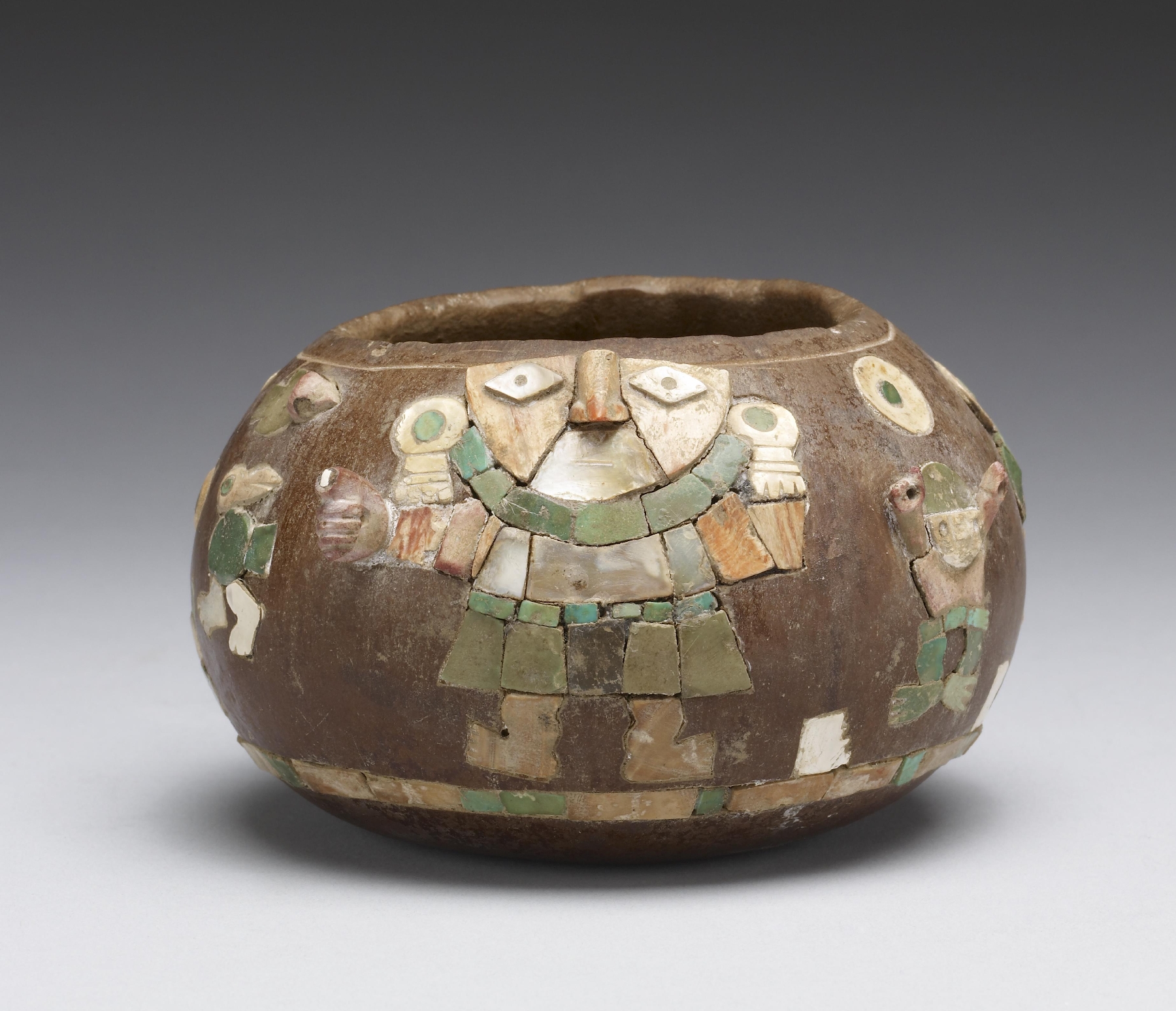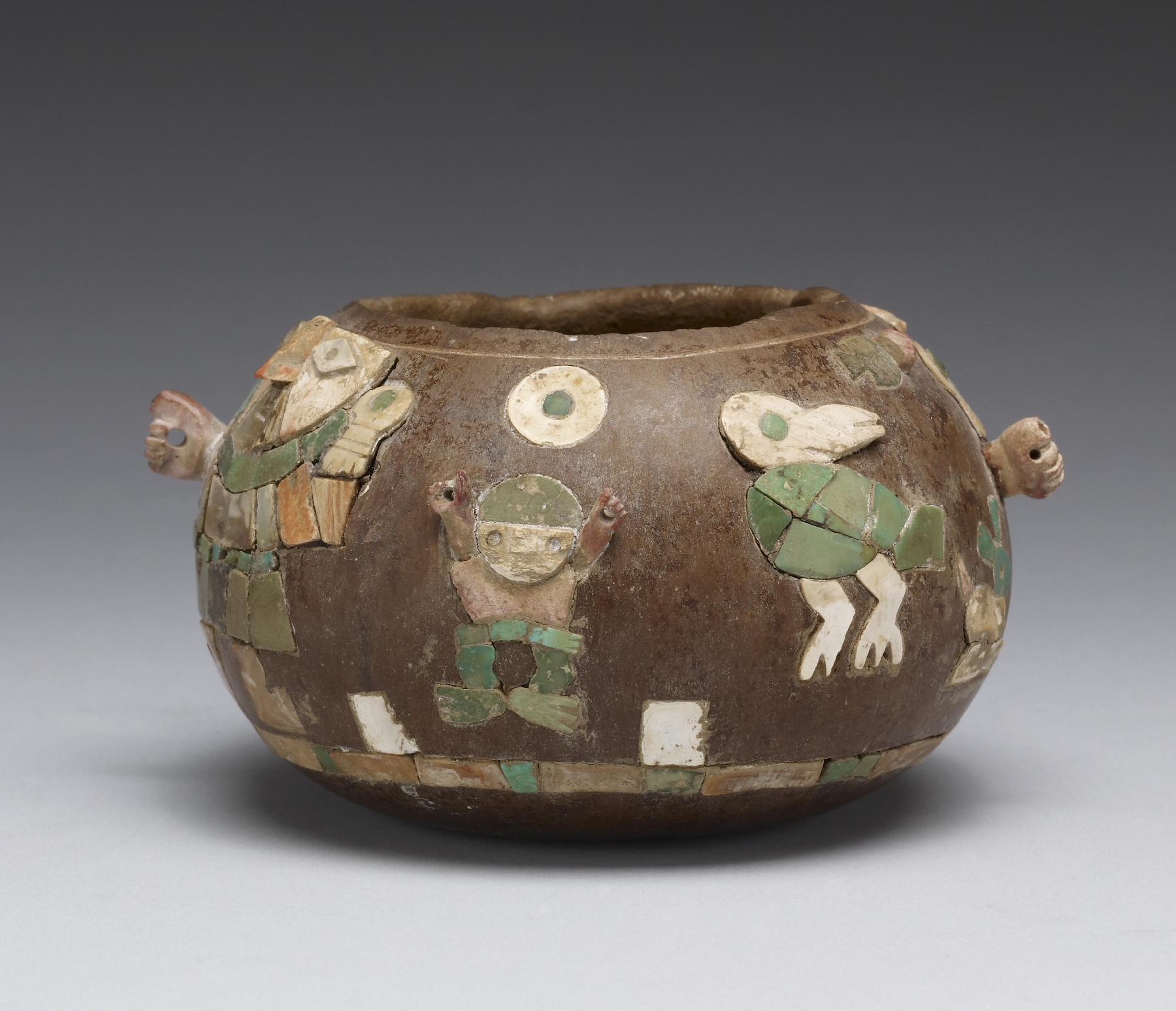Gourd
(Ancient Americas )
Moche artworks are often decorated with narrative imagery conveying myths or historical reenactments thereof. Others depict important members of Moche society, from rulers to warriors to religious specialists. The images follow a symbolic system that, like a language, has its own vocabulary and grammar. To understand the narrative, one must be literate in the symbolic system. In the case of Moche art, some narratives have been deciphered by combining archaeological data, narrative analysis, and ethnohistorical information. In other instances, such as the scene adorning this gourd vessel, the full meaning of the imagery remains enigmatic. The gourd's imagery, created by inlays of shell and stone, may be associated with the broader theme of ritual hunts, which among the Moche had shamanic overtones. This interpretation is based on features of the main figure, the presence of the cavorting dog, and the smaller-sized human assistant, all common elements of Moche hunting scenes. The figure's hands (one is missing) are carved from Spondylus shell and protrude from the gourd; a small perforation through the palm indicates that he originally held something-perhaps a hunter's spear thrower. Ritual hunts often seek sea lions, deer, or foxes, although birds may also be the selected prey as implied in this scene. The presence of fishlike and circular motifs floating in the picture plane suggests a coastal location for the event. The small step-fret motifs on the ground line (one of white shell and one of turquoise inlay) imply that the event is taking place in sight of architecture (i.e., a town locale) rather than in the wilds. The large, frontal figure's identity remains problematic because he lacks a headdress, which, in Moche art, provides important identifying features. It is likely that the headdress was found on the vessel's lid, which has not survived. Although the meaning of this gourd's scene is not fully understood, the tiny vessel is a fine example of delicate inlay artistry and expressive narrative rivaling the painted pictorial ceramics for which the Moche are renowned. The artist follows the Andean tradition of paired opposites, here contrasting the dry, brown surface of the gourd with the reflective (waterlike) rich colors of the shell and stone inlays.
Provenance
Provenance (from the French provenir, 'to come from/forth') is the chronology of the ownership, custody, or location of a historical object. Learn more about provenance at the Walters.
Throckmorton Fine Art, New York [date and mode of acquisition unknown]; John G. Bourne, August 1, 1994, by purchase; by bequest to Walters Art Museum, 2017.
Exhibitions
| 2012-2013 | Exploring Art of the Ancient Americas: The John Bourne Collection Gift. The Walters Art Museum, Baltimore; Frist Center for the Visual Arts, Nashville. |
Geographies
Peru, North Coast (Place of Origin)
Measurements
H: 2 3/4 x W: 4 5/8 x D: 4 1/8 in. (6.99 x 11.68 x 10.41 cm)
Credit Line
Bequest of John G. Bourne, 2017
Location in Museum
Not on view
Accession Number
In libraries, galleries, museums, and archives, an accession number is a unique identifier assigned to each object in the collection.
In libraries, galleries, museums, and archives, an accession number is a unique identifier assigned to each object in the collection.
2009.20.272








